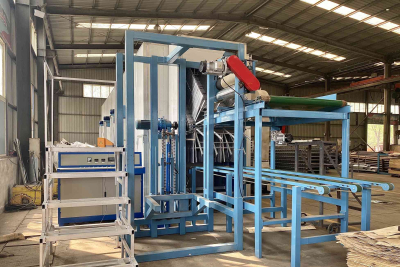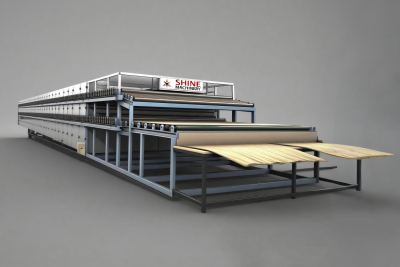What Distinguishes Rotary Cut Veneers from Sliced Veneers?
In the woodworking industry, veneers—thin slices of wood used to enhance the aesthetics and durability of finished products—are indispensable. Among the most common veneer production methods, rotary cut veneers and sliced veneers stand out as foundational techniques, each tailored to distinct applications and material properties. This article explores their differences, popular wood species, and optimal drying solutions, shedding light on how they shape the future of wood-based panel manufacturing and high-end decoration.
Production Processes: Rotary Cutting vs. Slicing
The primary distinction between rotary cut and sliced veneers lies in their production mechanics.
Rotary Cut Veneers: Produced by rotating a log against a sharp blade, this method peels the wood into continuous, spiral-shaped sheets. The result is typically thicker veneers (often ≥0.8mm) with bold, pronounced grain patterns—either straight (radial cuts) or wavy (tangential cuts). This efficiency in yielding larger, more uniform sheets makes rotary cutting ideal for high-volume production.
Sliced Veneers: Created by feeding a log through a slicing machine with a stationary blade, this technique generates thinner, more delicate sheets (usually <0.8mm). The slicing motion preserves finer wood textures and patterns, including subtle figuring like burls or fiddlebacks, making it a preferred choice for premium decorative applications.
Popular Wood Species & Application Scenarios
Both rotary cut and sliced veneers are versatile, but their unique characteristics cater to different end uses. Below are common wood species and their typical applications:
Rotary Cut Veneers
Birch: Known for its tight grain and light color, rotary-cut birch veneers are widely used in plywood and LVL (laminated veneer lumber) for structural applications, such as furniture frames and construction panels.
Eucalyptus: Fast-growing and cost-effective, eucalyptus rotary veneers are common in multi-layer composite boards, balancing durability with affordability for mass-produced furniture.
Pine: Softwood pine, when rotary-cut, produces lightweight, flexible sheets ideal for interior cladding and low-cost woodworking projects.
Sliced Veneers
Oak: With its prominent ring-porous grain, sliced oak veneers are a staple in high-end furniture, cabinetry, and luxury car interiors, adding warmth and character.
Maple: Its fine, even texture and light tone make sliced maple a top choice for musical instruments (e.g., piano surfaces) and decorative wall panels.
Walnut: Valued for its rich, dark color and striking grain, sliced walnut is used in premium woodworking (e.g., luxury countertops) and architectural accents.
Drying Solutions: Roller vs. Mesh Belt Veneer Dryers
Once produced, veneers require controlled drying to achieve optimal moisture content (8–12%) and prevent warping or cracking. The choice of drying equipment depends on veneer thickness:
Thicker Veneers (≥0.8mm) : Roller veneer dryers are the go-to solution. These machines use heated rollers to apply even pressure and heat across the veneer surface, ensuring efficient moisture removal without damaging thicker sheets. Their robust design handles the mechanical stress of thicker materials, making them ideal for rotary-cut veneers used in structural applications like plywood.
Thinner Veneers (<0.8mm) : Mesh belt veneer dryers are better suited. Featuring a perforated mesh belt, these dryers allow hot air to circulate freely, gently drying delicate sliced veneers without causing tears or deformation. This precision is critical for preserving the fine textures and patterns of high-end sliced veneers used in furniture and decoration.
Why Understanding the Difference Matters
For manufacturers and designers, choosing between rotary cut and sliced veneers—and their corresponding drying methods—is pivotal. Rotary cutting delivers efficiency and cost-effectiveness for large-scale projects, while slicing offers unmatched aesthetic appeal for premium applications. Pairing the right drying technology with veneer thickness ensures consistent quality, reducing waste and enhancing product value.
From the rugged durability of rotary-cut birch in plywood to the elegant figuring of sliced walnut in luxury furniture, rotary cut veneers and sliced veneers each play irreplaceable roles in the woodworking ecosystem. Coupled with specialized drying solutions like roller veneer dryers (for thick veneers) and mesh belt veneer dryers (for thin ones), these techniques empower manufacturers to meet diverse market demands—from industrial construction to high-end decoration.
Whether you’re crafting a sturdy bookshelf or a showstopping piano, understanding these distinctions ensures you select the perfect veneer for the job.








